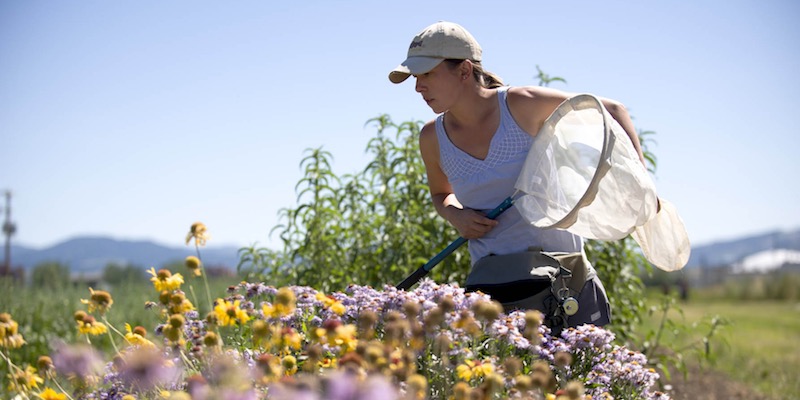Native Bees and Perennial Flower Strips
Evaluating Native Perennial Flower Strips for Enhancing Native Bees and Pollination Services on Farmlands
Native bees are increasingly recognized as important components of productive and sustainable agroecosystems. However, native bees are declining, likely due to habitat loss that reduces floral resources and nesting sites. Farming practices that support thriving and diverse communities of native bees and their pollination services are greatly needed, yet largely unexplored. One strategy to increase the abundance of beneficial insects on farmland is to provide non-crop floral resources in the form of annual flower strips. Few studies have evaluated the use of native perennial flower strips to provide resources (nectar and pollen) for pollinator conservation. Furthermore, the use of native perennials likely offers many additional benefits, including habitat stability, native plant conservation, and reduced yearly seeding costs, compared to annuals. In general, due to their lasting nature, perennial plants are a more sustainable and self-perpetuating option for flower strips.
The objectives of our project are to 1) determine the effects of native perennial flower strips on the abundance, diversity, and foraging behavior of native bees; 2) determine the value of flower strips in improving crop pollination; 3) evaluate the potential of flower strips for native seed production and sales; and 4) execute a research-based outreach program to communicate our findings. To our knowledge, no similar studies have been conducted in the western region, making it unique for this area. In addition, despite supporting a diverse suite of crops and increasing public interest for fresh, locally-grown produce, Montana is understudied with respect to its bee diversity and the role of native bees in agriculture.
Website: http://mysare.sare.org/sare_project/SW13-043/
MSU photo by Kelly Gorham.

